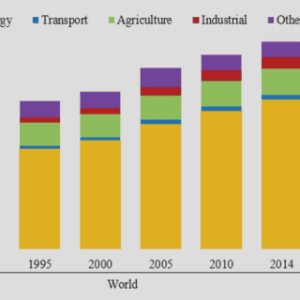(Downloads - 0)
For more info about our services contact : help@bestpfe.com
Table of contents
Chapter I: GENERAL INTRODUCTION
I.1. Public health impact of foodborne viruses
I.1.1. Identification of foodborne viruses
I.1.1.Estimate of number of cases linked to specific viruses
1.1.2. Attributing illness to food source
1.1.3. Public health impact estimates of foodborne viruses
I.2 Transmission of foodborne viruses
1.2.1. Pathways of transmission of foodborne viruses
1.2.2. Relative importance of different food products in the foodborne pathways
1.3. Biological characteristics of norovirus and hepatitis a virus.
1.3.1 Biological Characteristics of norovirus
1.3.2. Biological characteristics of hepatitis a virus
1.3.3. Comparison between HAV and NoV biological characteristics
1.4. Conceptual Framework and modeling approach
1.5. Overall aim of this study
Chapter II: QUANTITATIVE RISK ASSESSMENT OF FOOD BORNE VIRAL CASES
II.1. Introduction
II.2. Literature review of qra for foodborne viruses
II.3. Qra for hepatitis A virus
II.3.1. Presentation of the context of paper
ii.3.2. Published paper
II.3.3. Complement to the paper
II.4. Perspectives
Chapter III: DOSE-RESPONSE, CRUCIAL STEP OF FOODBORNE TRANSMISSION
III.1. Main dose-response models for qra purpose
III.1.1. Dose-response models: theoretical and biological meanings
III.1.2. Key parameters estimate
III.1.3. Limitations of dose-response modeling
III.2. Literature review of dose-response for foodborne viruses
III.3. Norovirus dose-response based on shellfish outbreaks data
III.3.1. Submitted paper
II.3.2. Complement of the paper
III.4.Perspectives
Chapter IV: DYNAMIC MODEL FOR COMPREHENSIVE ANALYSIS OF THE FOODBORNE AND NOT FOODBORNE TRANSMISSION PATHWAY
IV.1. Dynamic models used in epidemiology: biological and theoretical meanings
IV.1.1. Introduction
IV.1.2. Example of a stochastic process with continuous time: Gillespie algorithm
IV. 1.3. Parameter estimates and sensitivity analysis
IV.2. Literature review of published dynamic models with food-borne transmission
IV.3.Dynamic model of norovirus cases in a coastal area
4.3.1. Context
4.3.2. model structure
4.3.6. Results
4.3.7. Discussion
4.4. Perspectives
V/ GENERAL DISCUSSION-CONCLUSION
5.1. Major findings
5.2. Limitations of this work and perspectives
5.3. Conclusion
References




